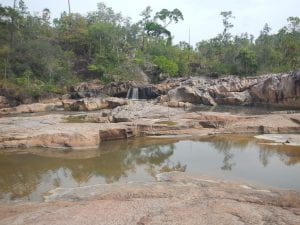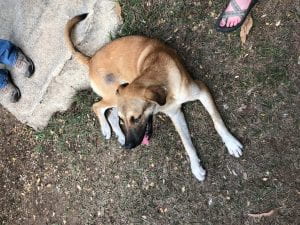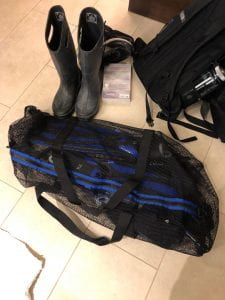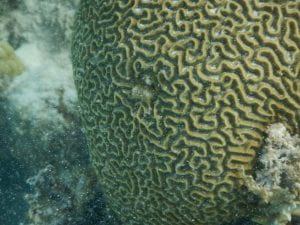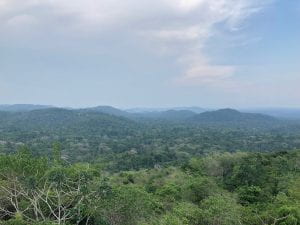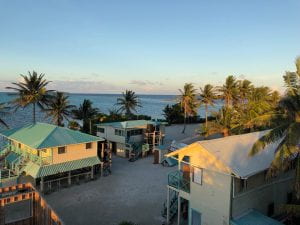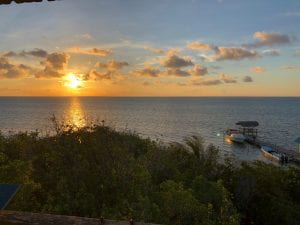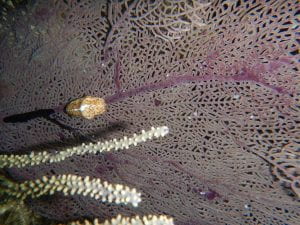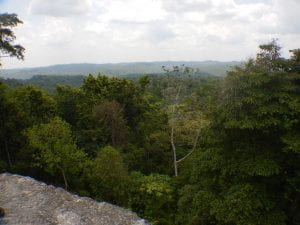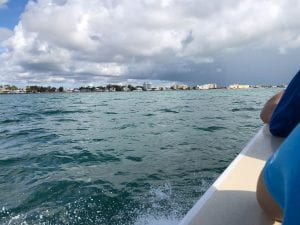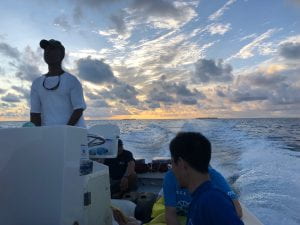Today, May 16th 2019, I had an early morning with 5:00 early morning birding. There was eerie mist surrounding the clearing and it was almost ominous to hear the jungle amongst suddenly come alive with bird calls. It started with the hoots of the Blue Breasted Mot Mots. The grey form of a Plumbious Kite flew into a tall tree and a pair of parrots flew overhead (flapping their wings rapidly and almost screaming) (this is completely normal and it looks like they’re panicking). Some Melodious Blackbirds and yellow breasted Social Flycatchers also made appearances. Perhaps the most surprising site was a Grey Fox slinking back into the forest at the edge of the clearing. The display that took the cake was the Plumbious Kite sweeping down from its perch to catch an insect and feed it to what I assume was its baby that was in a tree right in front of us.
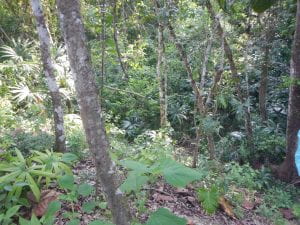
After, we had breakfast and an orientation and we started our experiment. In short, we’re investigating if the presence of the research station impacts species richness and abundance at different distances from Las Cuevas using images from camera traps (movement sensitive cameras). First, we hiked up a 50-hectare plot, a rectangular plot (50 hectares in area), and after 45 or so minutes we placed our first camera trap. On the way, we saw so much life such as beetles and crickets. Excitingly, we saw a couple instances of mammal scat (feces) and a game trail (a trail created by a large animal running through the forest to find food). A good indicator of a game trail is snapped vegetation with a compressed path through the forest. On the way back along the trail to place some other camera traps we saw a troop of Central American Spider Monkeys dwelling amongst the canopy. They shook trees, a behavior used to intimidate, and used their prehensile tails and great climbing skills to follow us until we exited their territory.
We then hiked up a longer trail called Monkey Tail Trail to place more camera traps and saw many ants (some of which bit people) and attracted the attention of a multitude ticks.
With a long day of hiking behind us, we ate dinner and ended the day with presentations on epiphytes, arachnids, and an overview on life in the rainforest canopy.
Tomorrow we have a project to construct in the morning and may go on to explore a nearby cave which is exciting beyond belief.

